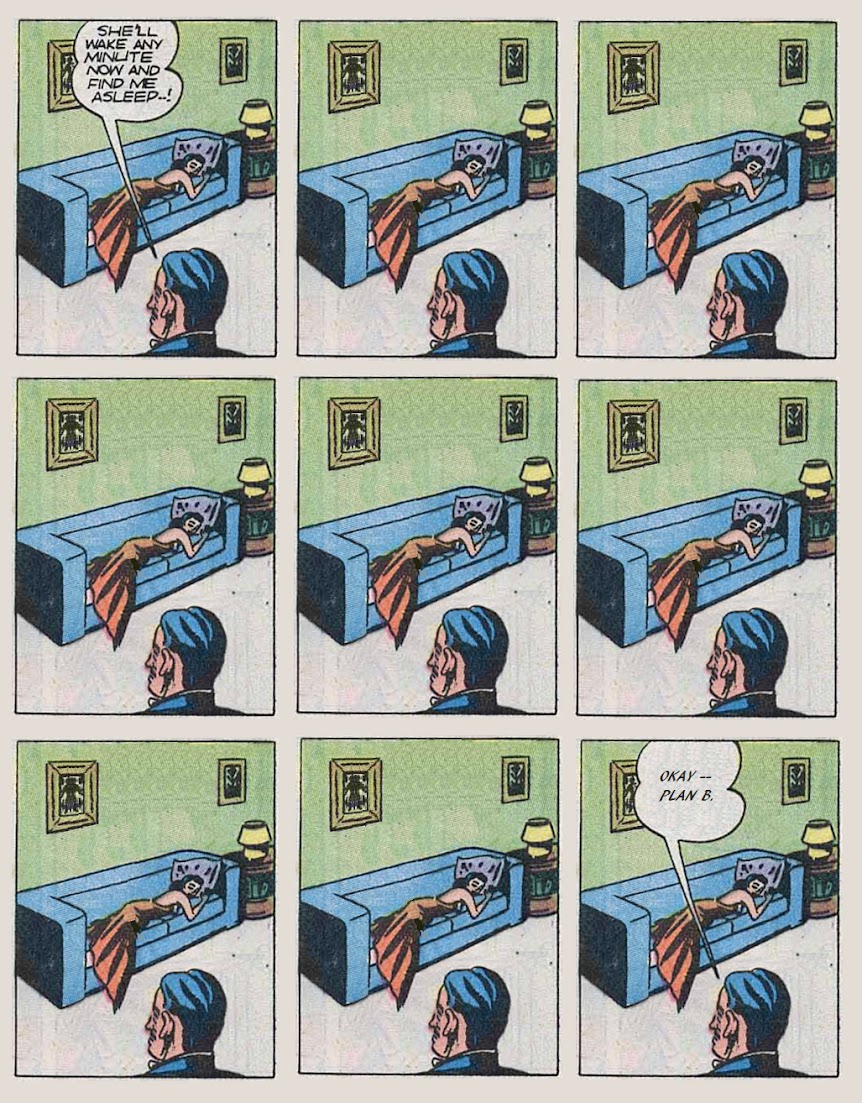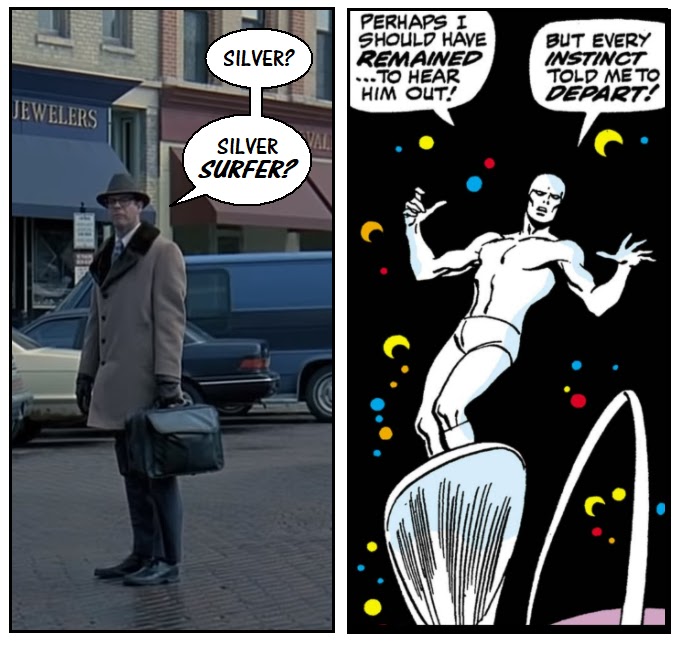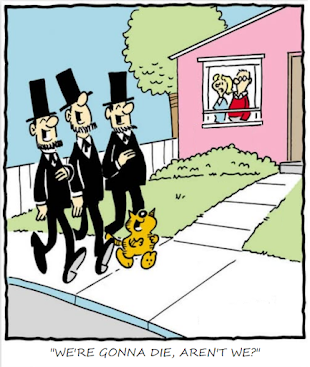 |
| There was a lot of Ed Wood in 2024. Too much, perhaps? |
In the career-spanning book Frank Zappa: The Negative Dialectics of Poodle Play (1995), author Ben Watson astutely observes that "1984 was a bamboozling year for Zappa consumers: The Perfect Stranger, Francesco, the triple-box Thing-Fish and then, as if that was not enough, a full-scale double rock album of new tunes, Them Or Us."
Ed Wood consumers could relate, as 2024 was a bamboozling year for them too. This was the 100th anniversary of Eddie's birth in Poughkeepsie, NY, and it seemed to inspire a torrent of releases and rereleases. Fans could barely keep up. And by "fans," I mean me.
 |
| Ed Wood's Saving Grace |
- Bob Blackburn released Kathy Wood and I: How I Fell Down the Ed Wood, Jr. Rabbit Hole (BearManor Media), an affectionate, meandering memoir in which he describes his unlikely friendship with Eddie's loyal widow during the final years of her life. My review is here.
- Meanwhile, Angel Scott released the highly unusual Drown the Devil: A Spiritual Biography of Ed Wood (BearManor Media), a religious-minded volume that I will review in the near future on this blog.
- Kurt McCoy edited a colorful anthology of Wood-inspired short stories entitled Warm Angora Wishes and Rubber Octopus Dreams (Arcane Shadows Press). I reviewed all the pieces in this collection individually, one story at a time over the course of two months. This was probably my biggest Wood-related project of 2024.
- Dennis Smithers, Jr. oversaw a new edition of Ed's long-lost 1975 novel Saving Grace. The late Greg Javer and I discussed this incredibly intriguing book on a podcast in 2021.
- Will Sloan announced his upcoming book Ed Wood: Made in Hollywood USA (OR Books), due in June 2025. It promises to be a wide-ranging critical study that includes Ed's movies as well as his novels and other written works.
- I should also mention Fred Olen Ray's wonderfully goofy horror novel Deep Red (Retromedia Press), based on an unproduced screenplay Fred cowrote with a drunken, dying Eddie in the late 1970s. Fred's book came out in 2023, but I didn't find out about it until 2024.
Ed Wood fans, you have your reading list for the next six months. Or more. You'd think that would have been enough for me, but this was also the year that I purchased a stack of vintage Ed Wood paperbacks from a seller on Facebook.
 |
| Has Flame of Islam been found? |
- In May 2024, a specialty label called Gold Ninja Video, which bills itself as the "Criterion of Public Domain Bargain Bins," released a two-disc limited edition of Ed Wood's Revenge of the Dead (1959). This is a movie we already know well under the rerelease title Night of the Ghouls but this edition includes the original credits, plus a slew of supplements and commentary tracks. Also included in this set are transfers of Jail Bait (1954), Final Curtain (1957), and (if you go snooping) The Sinister Urge (1960). There are also numerous extras related to actor Paul Marco, who portrays Kelton in the film, as the folks at Gold Ninja are big fans of his. Unfortunately, this seems to have vanished from the market shortly after its release. If you don't already own it, good luck finding it on auction sites.
- Arguably the biggest Ed Wood home release of the year was Severin's Hard Wood: The Adult Features of Ed Wood. This is a three-disc set containing new—and, in some cases, drastically improved—scans of Necromania (1971), The Only House in Town (1970), The Young Marrieds (1972), and Shotgun Wedding (1963), plus some of Ed's adult loops from the 1970s. Again, there are numerous commentary tracks, some featuring the late, great Greg Javer, plus various featurettes. This is arguably the most ambitious Ed Wood home video release since Big Box of Wood (2011). I only regret that Greg passed away so shortly after its release and that we couldn't go through the contents of this set together. Unlike Revenge of the Dead, this collection is still available.
- Just this week, I received a disc from BayView Entertainment and The 3D Film Archive containing a new transfer of Arch Oboler's forgotten feature Domo Arigato (1973), which I'd describe as a cross between a romantic drama and a travelogue of Japan. The dramatic parts are middling at best, while the travelogue parts are often spectacular, making excellent use of the 3D "Space Vision" gimmick. My interest in this particular disc is that it also contains a short film alleged to be Ed Wood's long-lost Flame of Islam under the title Cleopatra Follies (1953). It's extremely tame burlesque footage, including rather listless performances by Paula French and Shirley "The Pussycat Girl" Hayes, but the 3D effects are again quite impressive. Eddie's involvement was supposedly limited to writing the (sparse) voiceover narration.
As a result of all these releases, I definitely exceeded my "Ed Wood budget" for 2024. Bob sent me a complimentary copy of Kathy Wood and I, but the other books and discs I got were ones I'd paid for out of my extremely meager salary. Oh well. Who needs such trivialities as food and rent when you can have Necromania on Blu-ray?
Before 2024 comes to a close, we must remark on the times Eddie made the news this year. As I mentioned earlier, October 10, 2024 would have been Eddie's 100th birthday. This year is also the 30th anniversary of Tim Burton's Ed Wood (1994). So, as you might guess, there were screenings of that film as well as Ed's most famous 1950s films in theaters across the country in October, especially in his home state of New York and his adopted home of California. It's wonderful that Ed's birthday happens to fall during "spooky season," as does the birthday of his most famous star, Bela Lugosi.
While I was not able to attend these screenings in person, I did attend one virtually via Zoom and even got to host a Q&A after a screening of Ed Wood in the Poughkeepsie, NY area. Not long afterward, this same town saw fit to designate Ed Wood's childhood home as an official historical site, complete with its own marker. This recognition came about because of the efforts of some high schoolers in the area who cited this very blog as one of their sources! It does my heart good to know that Greg was aware of all this before his passing.
Look, I'd love to say that 2024 was a banner year in Woodology. In a lot of ways, it was—the 100th birthday, the books, the Blu-rays, the historical marker. That was all great, and it's nice that Ed Wood and his career are still generating such interest well into the 21st century. But the death of my friend and colleague Greg Javer, one of the greatest Woodologists I've ever known, casts a pall over the entire year. A lot of the books, articles, and films I reviewed for this series were only available to me because Greg had sent them. Where we go from here, I don't know. I'm still regrouping. We'll figure this out, week by week. In the meantime, I hope you and yours are enjoying the holiday season.





































